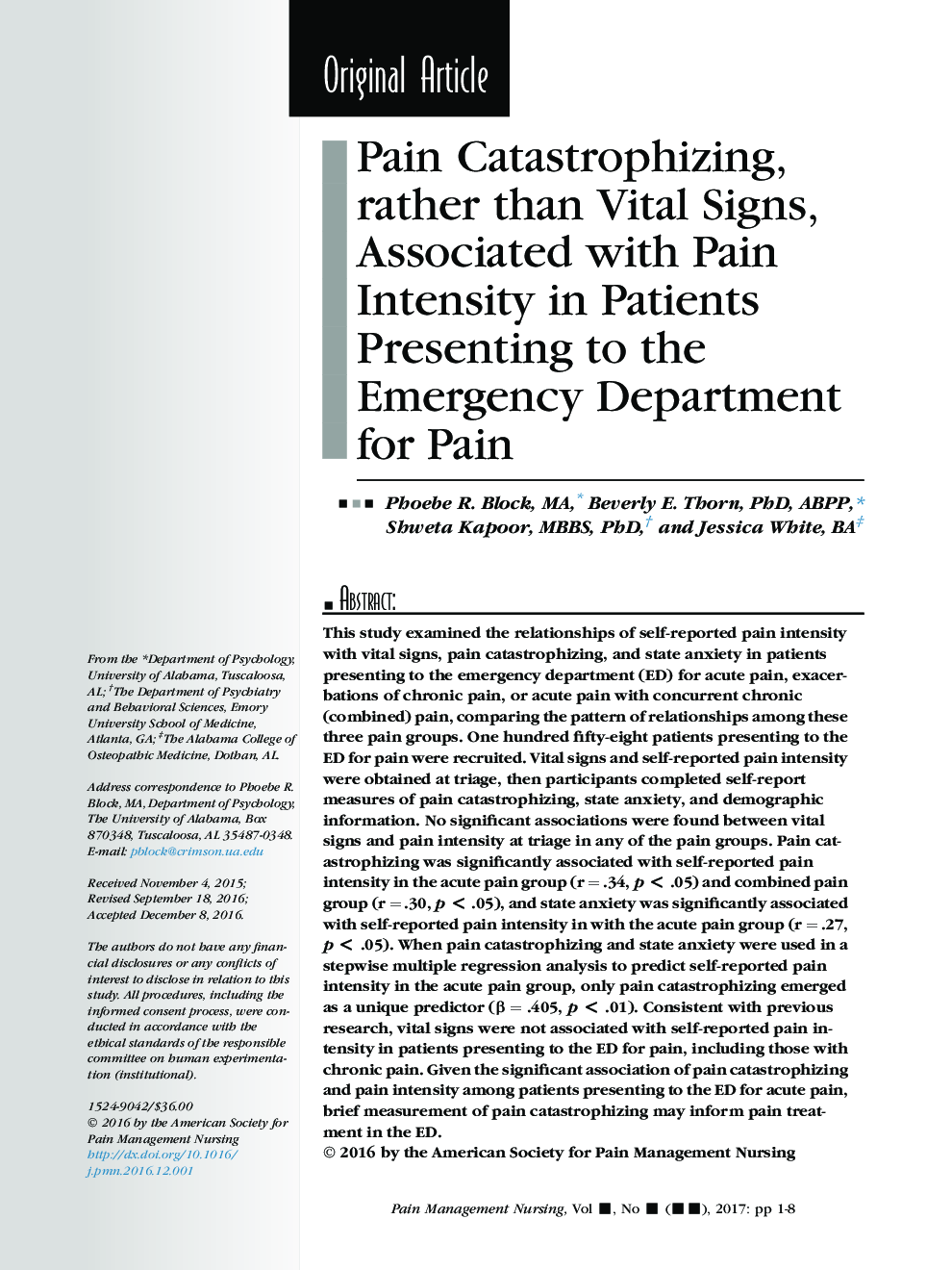| Article ID | Journal | Published Year | Pages | File Type |
|---|---|---|---|---|
| 5571359 | Pain Management Nursing | 2017 | 8 Pages |
Abstract
This study examined the relationships of self-reported pain intensity with vital signs, pain catastrophizing, and state anxiety in patients presenting to the emergency department (ED) for acute pain, exacerbations of chronic pain, or acute pain with concurrent chronic (combined) pain, comparing the pattern of relationships among these three pain groups. One hundred fifty-eight patients presenting to the ED for pain were recruited. Vital signs and self-reported pain intensity were obtained at triage, then participants completed self-report measures of pain catastrophizing, state anxiety, and demographic information. No significant associations were found between vital signs and pain intensity at triage in any of the pain groups. Pain catastrophizing was significantly associated with self-reported pain intensity in the acute pain group (r = .34, p < .05) and combined pain group (r = .30, p < .05), and state anxiety was significantly associated with self-reported pain intensity in with the acute pain group (r = .27, p < .05). When pain catastrophizing and state anxiety were used in a stepwise multiple regression analysis to predict self-reported pain intensity in the acute pain group, only pain catastrophizing emerged as a unique predictor (β = .405, p < .01). Consistent with previous research, vital signs were not associated with self-reported pain intensity in patients presenting to the ED for pain, including those with chronic pain. Given the significant association of pain catastrophizing and pain intensity among patients presenting to the ED for acute pain, brief measurement of pain catastrophizing may inform pain treatment in the ED.
Related Topics
Health Sciences
Medicine and Dentistry
Anesthesiology and Pain Medicine
Authors
Phoebe R. MA, Beverly E. PhD, ABPP, Shweta MBBS, PhD, Jessica BA,
